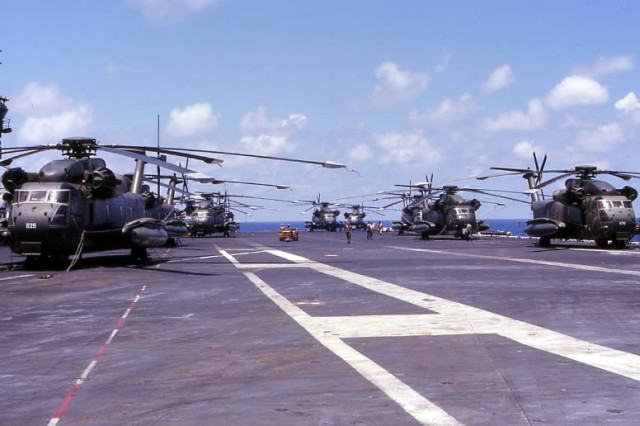World War II ended officially on 2nd September 1945. On the surface, harmony was restored in most of the world, and all out efforts were being made on reconstruction & rehabilitation.
Creation of organizations like the UN promoted the thought that it would take serious effort to bring the world close to conflict once again. However, very quickly the two major victors of WWII were rising against one another, trying to extend their spheres of influence as far as possible.
One of these advocated the democratic way of government and was led by the US while the other backed Communism, i.e. the Soviet Union. After the Korean war, the next major cold war battlefield became Vietnam.
The U.S. government viewed its involvement in the war as a way to prevent a Communist takeover of South Vietnam. This was part of a wider containment policy, with the stated aim of stopping the spread of communism. The North Vietnamese government and the Viet Cong were fighting to reunify Vietnam. They viewed the conflict as a colonial war, fought initially against forces from France and then America, and later against South Vietnam.
American involvement in the war peaked in 1968, the same year that the communist side launched the Tet Offensive. The Tet Offensive failed in its goal of overthrowing the South Vietnamese government, but became the turning point in the war, as it persuaded a large segment of the United States population that its government’s claims of progress toward winning the war were illusory despite many years of massive U.S. military aid to South Vietnam.

Gradual withdrawal of U.S. ground forces began as part of “Vietnamization”, which aimed to end American involvement in the war while transferring the task of fighting the Communists to the South Vietnamese themselves.
Despite the Paris Peace Accord, which was signed by all parties in January 1973, the fighting continued. In the U.S. and the Western world, a large anti-Vietnam War movement developed as part of a larger counterculture. The war changed the dynamics between the Eastern and Western Blocs, and altered North-South relations.
Direct U.S. military involvement ended on 15 August 1973; a cease-fire was declared across North and South Vietnam, and U.S. prisoners of war were released.
North Vietnam, however, was determined to take over the South and continued offensive operations.
The final blow came in early 1975 when the NVA and Viet Cong managed to reach the outskirts of Saigon, the capital of South Vietnam with a total force of 120,000 men. Saigon was the epicenter of all planning & operations.
On 1st January 1975 the People’s Army of Vietnam had advanced to within 75 miles of the capital. Small skirmishes between the South Vietnamese Army and the PAVN or Viet Cong were normal and taking the past record of the South Vietnamese Army in mind; the city would fall unless something close to a miracle happened.
As the Northern forces moved closer, the South Vietnamese Army started to disintegrate, and President General Thieu fled to Taiwan.
Supported by both artillery and armor, the North Vietnamese continued their march unhampered, capturing all the major cities. The South Vietnamese forces were retreating in a haphazard way which boosted the North’s morale even further.
The CIA officers stationed in Saigon recommended that nothing short of B-52 strikes could stop the advancing army, something which was no longer feasible or possible due to growing anti-war sentiment in the US.
On the 9th of April, the PAVN forces reached the capital’s last line of defense Xuan Loc where the 18th division of the South’s Army made a last stand, holding the city for several days. But even they couldn’t stop the advance. Downtown Saigon was now only 26 miles away, and the Americans were getting ready for evacuation.
Meanwhile, the PAVN was busy encircling the city after taking the Mekong Delta area.
Continues on Page 2
The post Fall of Saigon – The Decisive End of the Vietnam War appeared first on WAR HISTORY ONLINE.
